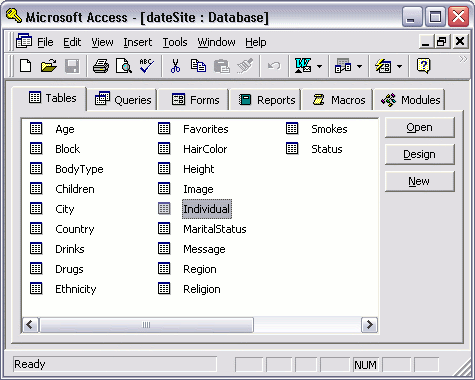

Hint: Choose an appropriate name that reflects the type of your database this sounds way better than simply calling it “My first database”! Once you’re ready, launch Microsoft Access, choose File -> New -> “Blank Database”, and click on the “Create” key to kick-starting your first Microsoft Access database! Don’t worry about perfection your tables will evolve as you work with Access and gain mastery over it. We suggest you have a rough draft of your table structure on paper.

What are the connecting links across tables? These are potential foreign keys (you will learn more on this below).(Don’t worry if you don’t find something unique, as Access can auto-generate a primary key.) This will be the primary key and can be one or more columns. What is unique across each table? What can you use to identify one row of data from each table? E.g., Name, Id, etc.What is common among the data you have? Can you group them into separate tables based on this common factor? E.g., Income, Expenses, Address List, etc.What kind of data do you have? Business records, Personal files, data that support your Cultural society? Ideally, each type will contain its own database.Some questions that will help you get this right include: Please think of this as an important preparatory step as it is the structure of your tables that decides the success of your Access application. If you intend to use the Access database, the chances are that you already have a fair idea about the table structures you want to create. Organize your data into structured tables.In this article, we guide you to build your first working database with 6 simple steps. And the good news is that all of this is effortless in Access! In addition, it also allows you to join or exclude data from tables (like joining Excel sheets) based on special criteria. Access offers all the basic operations that Excel does, like sorting, calculations, filters, etc. It makes complex data operations effortless.But if you now want to combine these sheets and study them together, you’ll have to use special (and sometimes cumbersome) Excel features like charts, dashboards, etc. For instance, you may have stored several Excel sheets for monthly expenses. Unlike Excel, it also works as a seamless memory bank that stores and remembers your data so you can easily retrieve it for future use. You may use the tool for budgeting your monthly expenses, organize your library catalogue or maintain an elaborate address book the key lies in structuring your data into simple, non-redundant tables that can be linked together. This means that all data is organized into (related) tables. Excel functions, formula, charts, formatting creating excel dashboard & others Microsoft Access


 0 kommentar(er)
0 kommentar(er)
